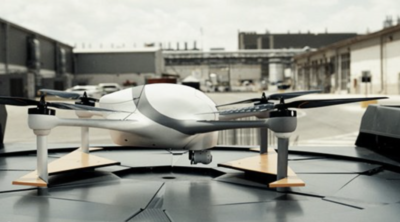Don DeRosa, CEO of Eonix, is an entrepreneur with a demonstrated history of working in the nanotechnology and energy storage industry. Skilled in Electrolyte Design, Energy Storage Research and Development (R&D) and Python. He is a high tech professional with a Ph.D. focused in Nanoscience from the State University of New York at Albany.

Q: Eonix just received a $1.7 million dollar grant from AFWERX. Can you share what you’re working on?
A: Our team is full tilt on high power electrolytes for Directed Energy Weapons and eVTOLS. We’re developing drop-in compatible electrolytes to enable high power batteries for counter-drone swarm directed energy and eVTOL systems.
We need a battery that can operate at this specified temperature range, that can discharge at high rates for use against emerging threats like drone swarms and hypersonic missiles. With this contract, we’ll start having cells that can be reviewed in 8 months, we’re going from scientific concepts to commercial prototype in less than a year, which is blazing fast.
Q: Your initial work focused on non-flammable battery chemistry. How is that proceeding?
A: Nonflammable LIB is going through trials in two formats. We are looking to transition to that technology to the commercial space in the next 6-12 months. You can stab it, overheat it, overcharge it, it should not catch on fire. Other companies have tackled the same problem through changing cell architecture, introducing a new material. But that disrupts the economics and scalability of it. You trade off performance, cost and scale for improved safety.
Q: The accelerated materials discovery tool, called ATLAS, shrinks discovery times from a few years to a few days. How does that work?
A: Using our prior process, the problem is humans start to run out of ideas. Your bottleneck is ‘what are we doing next?’ With Schrodinger, we solve that constraint ny integrating computational suggestions. We generate an insane amount of data in the lab, which is used to retrain computational models. We help [the lab] identify candidates that have greater merit. Every day the process gets smarter and smarter.
Q: How did you choose to focus on developing battery fuel instead of, say, new battery types like those developing energy-dense silicon anode batteries??
A: Designing the liquid provides some unique go-to-market possibilities. We buy cells dry and reach out to manufacturers, and say, “make 99% of the battery and we supply the electrolye.” We like to keep their battery designs “as is,” because changing it introduces problems and costs.
Ensuring the elctrolytes function with existing cells is challenging. We’re tying our hands behind our back to make our solutions drop-in compatible. Sure, we have to tweak the additives, or introduce a compound, to ensure everything is stable. But given our process we’re able to be pretty nimble.We can provide annual upgrades of our electrolyte fuels like new iPhone releases.
Q: Why would a manufacturer choose to optimize electrolyte fuel over other cell attributes?
A: As long as there’s liquid in the device, we can do wonders. We’ve found that few facilities can compete on the commodity market because of China’s flooding of space with LIB batteries on same framework as it did solar (in 2007-2008). So we have the ability to differentiate your batteries’ cells, making them non-flammable and/or more attractive to eVTOLS.






